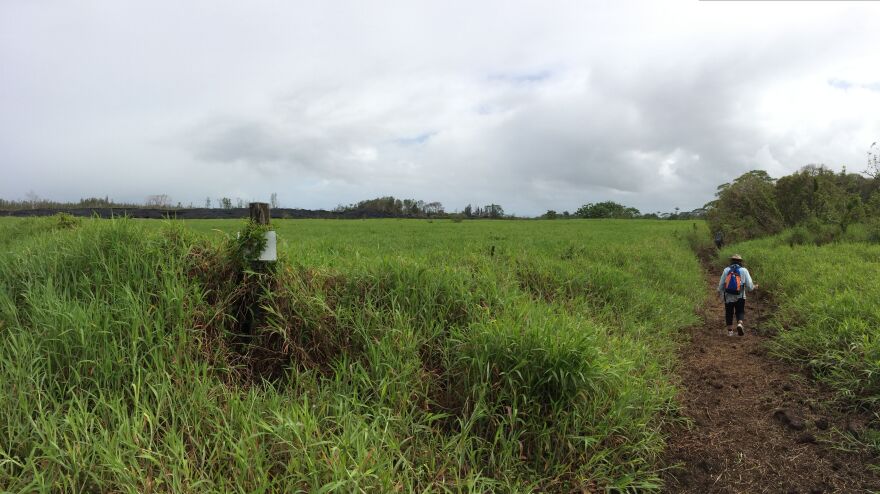
Nearly a year ago, lava from K?lauea started flowing towards the Big Island town of P?hoa. The lava has since cooled, but has forever changed the landscape of the small town. And as Hawaii Public Radio’s Molly Solomon reports, nowhere is that more apparent than at the P?hoa Japanese Cemetery.
Aiko Sato leads a small group, walking single file towards P?hoa Japanese Cemetery. Thick grass nearly 4 feet tall surrounds us as we make our way down the dirt path. As we get closer, a black wall of dried lava comes into view. For many residents, it’s a constant reminder of last fall, when the active flow seemed on track to hit the small town of P?hoa.

We carefully step onto the young lava as it crackles under our feet. Several families have gathered to visit the cemetery, most for the first time since last fall. A Japanese-Hawaiian family sing a blessing as they leave an offering of a small stone wrapped in t? leaf at the base of the lava. Many, like Sato, never thought they would have a chance to return. "It invokes a lot of different emotions. It's sort of surreal to see how the landscape has changed," said Sato. "And yet for me, going to the cemetery is like a renewal of spiritual energy."

Three men dressed in Buddhist robes gather in front of the muento, a monument at the front of the cemetery. One of them is David Fujimoto, the minister of Puna Hongwanji Mission. He’s leading a special service for the first time since the lava flow.
Last year, he held a goodbye ceremony in September, thinking it might be his last. "I remember the first time seeing all this," said Fujimoto. "It's just unreal."

He shows me a Buddhist altar towards the back, renovated just months before the lava flowed through the cemetery. Pele missed it by just a couple of inches. "You can see this part right here," said Fujimoto as he points to the place the lava stopped next to the altar. "Just a little finger came in, that's all."
Most of the 250 graves are now under a blanket of lava. Some headstones have been uprooted, others buried. That’s the case for Gladys, who’s come to pay her respects to the graves of her ancestors. "Our is where that lady is standing," said Gladys, pointing in the direction of the lava, which has since inflated to the height of a two-story building. "But it's like how many feet under? 10 feet under? 20?"

Gladys explains that while her mother's relatives were buried here, she had their urns removed 10 years ago. They're now with the rest of the family at a temple in Keaau. "It was just the monument itself," said Gladys. "But we still should have brought it to Keeau. We were too slow, too late."

But the lava didn’t claim everything. Aiko Sato’s family grave is one of the few that were spared. "I'm still able to go and visit grandma and grandpa," said Sato grateful that her family's headstone was still there. "It's like paying my respect to all the unknowns as well as all those graves that have been covered. They'll know that they aren't forgotten."





